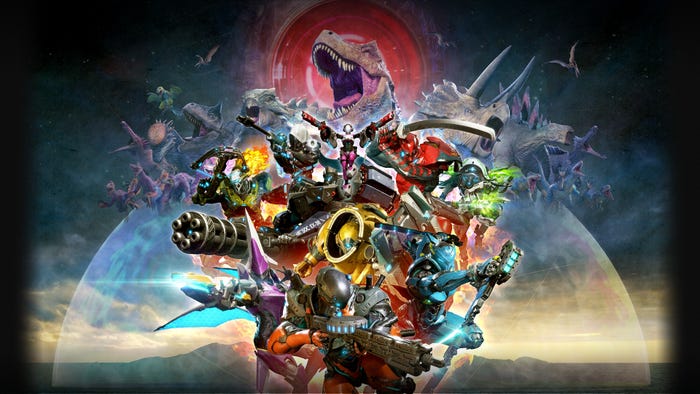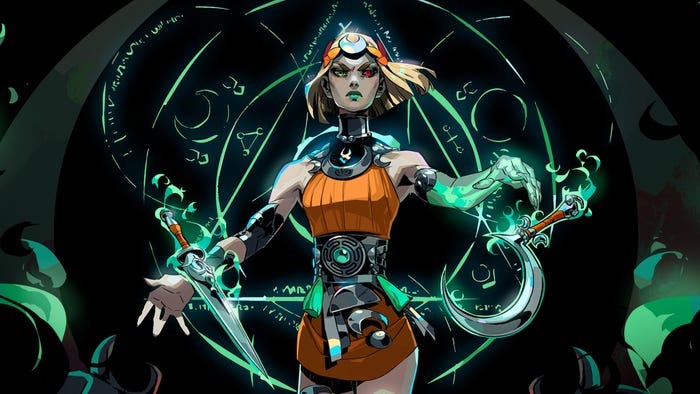
Featured Blog | This community-written post highlights the best of what the game industry has to offer. Read more like it on the Game Developer Blogs.
A Freemium Ride
In August 2017 I launched my first freemium game on to Google Play. The next 18 months included rapid increases in revenue, sudden drops in revenue, fighting fires and having the game pulled from the store. This is the story of Pish Posh Push.

The Story of Pish Posh Push
In 2016 I was looking for a new game to create to follow on from the success I'd had with my slot machine games. Those games have been amazing in terms of downloads, I still find it crazy that millions of people around the world have downloaded and played games that I've made. Those games were less successful from a commercial point of view, whilst they covered their development costs, they only generated revenues of a few pence per user. That's about the level of revenue you can expect from a free game funded solely by adverts, so you have to be lucky and get massive download volumes to get a decent return on your investment.
That volume of downloads has become harder to reach over the years as the app stores have matured, choice has increased and niches have been filled. My first two slot machine games reached millions of users organically, but my last one only reached a fraction of that. My goal at this time was to become a full-time game developer, so for my next game I wanted to improve my revenue per user to a level where it could support me, I decided that I'd create a game designed from the ground up as a freemium game. I felt that a coin pusher game would fit in well with my portfolio of games so I started work on Pish Posh Penny Pusher and by August 2017 I had a product that I felt was ready for release.
The Launch
I've written a previous post about the strategy I used to get the initial acquisition of users started, and these app store optimisations accomplished their goal of getting my game towards the top of the results for my targeted search terms. Between August 2017 and April 2018 the game had a steady growth in its installation base. This was helped by an update that took the game from the original 7 levels up to 14 levels. That update had been prioritised as only a few weeks after launch I was already getting feedback that players had completed the game and wanted more.
The game peaked at 29k active installations at the beginning of April 2018. Then suddenly and with no apparent cause the number of active installs went into a sudden decline. I still don't know what changed, I can only imagine that the game was featuring in some list on Google Play somewhere and then it stopped, or perhaps there was some search algorithm that changed. This is one of the risks with relying on organic user acquisition and an opaque store algorithm for your growth.
The Decline
Pish Posh Penny Pusher went from gaining about 200 new users per day immediately to losing that same amount each day. With less than 30k active users there is only so long that you can sustain that level of contraction. Although it was quite a worrying time, I always had faith in the game and felt that I could turn things around. The primary problem was user retention, fourteen levels was just not enough to keep people engaged, and to extend the gameplay time some of the levels took a long time to complete which also had a negative effect on retention.
There is a golden rule for making successful freemium games, first address user retention, it is your highest priority, if you can't keep your players then you can't effectively monetise them. Once you have good retention, your next priority is to optimise your monetisation. Finally, only once you are retaining and monetising effectively should you consider the problem of acquiring new users. The obvious argument against this is that you have to acquire new users first of all in order to know if you can retain and monetise them. To address that I might add that the very first step is to have an organic user acquisition strategy in place as I did. However you choose to do that you should be able to get enough players to be able to start measuring retention and monetisation.
To address the retention problem with Pish Posh Push we worked through the summer of 2018 on a large expansion that took the game from 14 levels up to 140 levels, a ten times increase. It took a long time and was difficult because I had not originally designed the game to have that many levels. It is possible to see the fact that I re-engineered the game in this way after release by looking at the level structure. This was a lesson that was learned the hard way, freemium games should not have an obvious ending, or if they do, it needs to take a long (ten times as long) time to get there.
The knockback
The release of the update expanding the game to 140 levels halted the decline at about 20k active installations and the numbers slowly started to rise again by about 30 users per day. Then on September 15 2018, just after I had achieved my goal of becoming a full time game developer, the revenue I was getting from adverts within the game suddenly and without warning dropped by 80%, This was mainly revenue from rewarded video ads which are one of the primary monetisation channels. Even worse was that players were trying to watch adverts and less than half were being given ads to watch. This caused my retention figures to start declining again and was the primary complaint in player reviews.
My mistake was to be entirely dependent upon Google Admob for my in-game advertising. I immediately started work on a two pronged strategy to fix the problem. The first angle of attack was to remove the requirement for an advert to actually be shown for the player to get their coins. I added a "Movie pass" feature to the game where if Admob's server responded to say there was no advert available, the game would give the player their coins anyway. The other approach was to take a crash course in ad network mediation and to get more ad networks into the game as alternatives to Admob. Luckily one of the first ones that I tried was Facebook Audience Network and this has been my ad network of choice since then for rewarded video adverts.
As this was going on, we were involved in a discussion with the developer liaison staff at Admob to find out what had happened to our revenue. It finally transpired that Pish Posh Push had been moved into their mature category of games as it had been classified as a gambling simulation. We attempted to argue that the game was rated as "teen" by most certification boards around the world, but to no avail. I'm still not sure why this recategorisation caused an 80% drop in revenue, I guess most advertisers must choose to specify that their ads should not be shown in games classified as mature.
The kicker
About that time I had another setback, on September 26 2018, Pish Posh Penny Pusher got pulled from the Google Play Store and was unavailable to download. The reason was that the game had no privacy policy and the cause was that I had not read all of Google's developer policies correctly. I had missed an update that specified that all apps that showed adverts to players had to have a privacy policy available both on the Play store and within the game.
By the end of the same day that we received the notice, we had created a privacy policy, published it and integrated it into an update of the game. It was a shot across our bows and I decided to make sure that we would not be in the same position again, I started work on ensuring the app was belt and braces compliant with Europe's GDPR rules and in November released another update that included a consent form shown to players within the EU.
Before the consent form was added I had managed to stabilise the retention problem and active player numbers were hovering just below 20k. Unfortunately the consent form had an adverse effect on retention and player numbers began to decline again. Over the next month I worked on a number of small fixes whilst also still working on the inclusion of the Facebook ad network to fix my rewarded ads problem.
The recovery
By January 2019 I had fully integrated Facebook ads in the game and I'd managed to stabilise the active player count at about 18.5k. That active install base had dropped by over ten thousand in less than a year, but now I felt that I had fixed all the retention and monetisation problems with the game. I've already spoken about fixing advertising revenue by mediating adverts between Admob and Facebook, the other monetisation fix added was to add a number of weekly sales and special offers to the game. The most popular of these is "Ticket TV", every Sunday players can watch a 30 second video to get ten free tickets in the game. Looking at the daily active users, which peak slightly on Sundays, it appears that some players open the game just to take advantage of this offer.
Confident that the average lifetime value (LTV) of a player was now quite healthy at about £0.60, I was ready to start experimenting with paid user acquisition. Google had sent me some promotional advertising credit which I used to get started and I created a unified app campaign with encouraging results. I made financial projections as to what I expected as a return from my advertising spend and closely monitored that the reality matched those estimates. So far they have been close to my expectations, although I am noticing some diminishing returns as I increase my budget.
In the two months since I started spending money on advertising the game, my active install base has increased by ten thousand players. I'm now up to 28k installs on active devices and the daily active users has doubled in the last two months from 4k to 8k. The advertising campaign is a success and the growth of the game seems to be continuing nicely.
Conclusion
The last 18 months have been quite a roller coaster with the main theme being making updates to keep people interested in the game for longer. The goal throughout has been to at least gain as many people organically each day as I lost, at that level I was happy with the rate of retention. The second factor, monetisation, was all about calculating the LTV of my players. For this I found a good LTV calculator spreadsheet created by Google developer support. I made some changes to my copy of this sheet, my figures are more pessimistic than theirs, but it's a great starting point for this vital calculation.
Only when I was happy with both my game's retention and with the LTV I calculated did I consider paying to acquire new players. The LTV figure gave me my absolute upper limit on what I was prepared to spend to acquire a new user and my stable level of retention gave me confidence that I wouldn't be losing them straight away.
The important takeaway is to retain, then monetise, then acquire, in that order. Think of it as a leaky pipe. You should only spend money if you can make it back, and you should only acquire new players if you have studied your game's retention and are confident you're not going to lose them.
Read more about:
Featured BlogsAbout the Author(s)
You May Also Like













